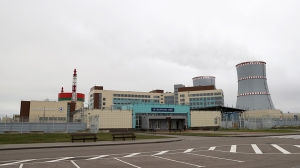Background radiation monitoring after Belarus nuclear power plant's second unit's launch explained

MINSK, 31 January (BelTA) – Piotr Kuchinsky, Director of the A.N. Sevchenko Institute of Applied Physical Problems of Belarusian State University, talked to a BelTA reporter to discuss how background radiation monitoring will be organized after the second unit of the Belarusian nuclear power plant is commissioned.
Piotr Kuchinsky said: “Russian systems are used to monitor radiation levels at the Belarusian nuclear power plant itself but there are Belarusian automated radiation monitoring systems around the nuclear power plant. They are united into one large system. At present there are ten stations and their data is transmitted to the National Center for Hydrometeorology, Radioactive Contamination Control, and Environmental Monitoring.”
In his words, initial plans envisaged building a network of 20 automated radiation monitoring systems around the Belarusian nuclear power plant, however, only half of the original number work now. “If the country's leadership makes the relevant decision, the number of the automated radiation monitoring systems may be increased,” the director said.
Scientists believe that it is necessary to put the original number of automated radiation monitoring systems in place in view of the forthcoming commissioning of the second unit of the nuclear power plant. “I think the Natural Resources and Environmental Protection Ministry and the National Center for Hydrometeorology, Radioactive Contamination Control, and Environmental Monitoring have to implement this plan and surround our nuclear power plant with 20 automated radiation monitoring systems. In addition to administrative and social functions they will perform a political function. It is important for all countries to see that the Belarusian nuclear power plant is safe and does not pollute the territory with radioactive isotopes. I am sure it will be better and safer for everyone like that,” Piotr Kuchinsky stressed.













